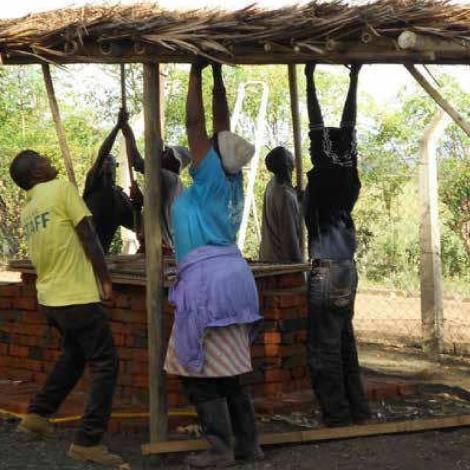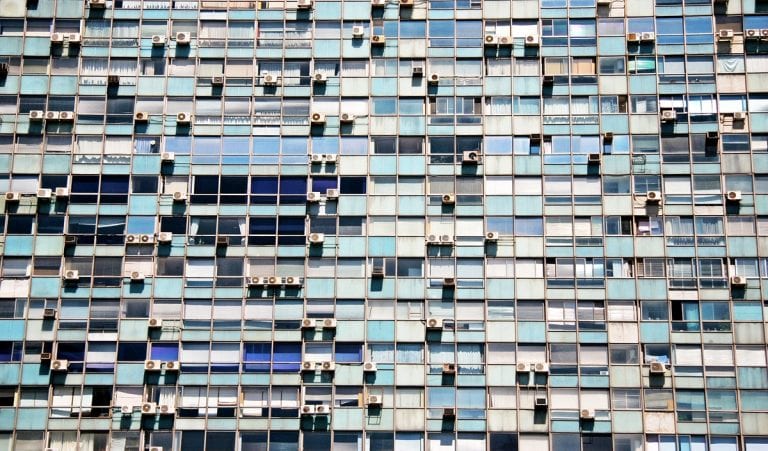The year 2023 was the hottest year since global temperatures were first recorded in 1850, and this year is on track to set a new record. Temperatures should continue to climb with unchecked climate change, and by 2050 close to 1,000 cities will see average summer highs of 35°C (95°F), nearly triple the number that already do today, says Mark Radka, Chief of the UNEP Energy and Climate Branch.
The sad irony is that the air conditioners we use to cool off are exacerbating climate change and adding to the heat. especially those powered by fossil fuels. It’s predicted that around two-thirds of the world’s households could have an air conditioner by 2050, the IEA predicts. And the demand for energy to cool buildings could triple.
There are sustainable alternatives, however. Sustainable air conditioning can be powered with solar PV systems and evaporative coolers require no electricity at all. Passive cooling features built into homes can keep indoor temperatures lower, and innovation in cold storage preserves food for longer. These are 10 sustainable technologies for staying cool in the heat.
Read More: Keep Buildings Cool Without Air Conditioning, According to an Expert in Sustainable Design
Earthen housing prototype in Rwanda
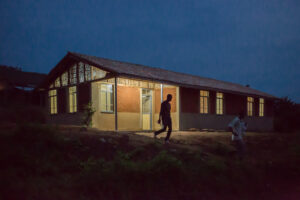
Photo used with permission by Sharon Davis Design
To begin, the materials that compose a building matter. Earthen blocks and other earthen construction regulate temperatures, keeping cooler in the heat and warmer in the cold. This earthen housing prototype in Rwanda is built from locally quarried stone, compressed earth blocks, eucalyptus, timber, ferrocement and clay roofing tiles.
See the Affordable Earth Housing prototype in E4C’s Solutions Library.
Earth Tubes
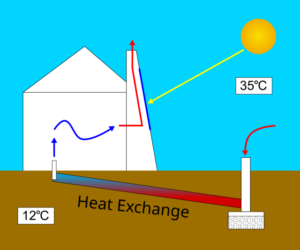
Image: Shypoetess / Wikimedia Commons / Creative Commons Attribution-Share Alike 3.0
Earth Tubes passively heat and cool buildings using the relatively constant temperatures underground. Tubes of plastic or other material are buried at least two meters (6 feet) underground, where the temperature stays around 10°C (50°F). In summer, they cool and dry the air before it enters the building, and in winter, they warm the air. Earth Tubes are often used alongside regular heating and cooling systems, especially in places with temperature extremes in the summers and winters. This article explains how to install them: Earth Tubes: How to Build a Low-Cost System to Passively Heat and Cool Your Home.
Infrared paint
Infrared paints that reflect solar radiation can reduce surface temperatures on buildings by more than 10°C (18°F), compared to conventional paint. See how to make IR cooling paint in the video below. Also, researchers at Purdue have developed the “whitest” paint that can be used to reflect solar radiation and passively cool surfaces.
Read More: Ten cold chain solutions
Window shading
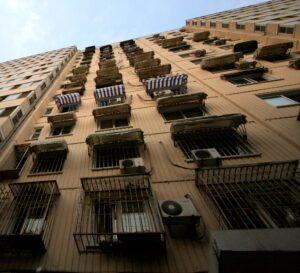
Photo: Ernie / CC BY 2.0
Climate Safe Housing has issued strategies for cooling multi-family apartment buildings. One strategy is the efficient placement of awnings and overhangs. https://www.climatesafehousing.org/window-shading
Clay Pot Evaporative Cooling
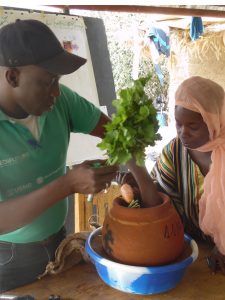
Djiguiba Boureima (left) and Kadidia Nienta demonstrate a clay pot cooler at a training session at the Nyleni Cooperative Society in Mopti, Mali. Photo courtesy of Djiguiba Boureima
Food loss due to poor storage is a global issue, with about 23% of food in Sub-Saharan Africa lost or wasted. One low-tech solution is the earthenware cooling pot, which uses evaporative cooling to keep food fresh. As water evaporates from the pot, it cools the surrounding area, helping to prevent food from spoiling in hot climates.
From the Solutions Library: The Charcoal Cooler
Evaporative cooling chambers
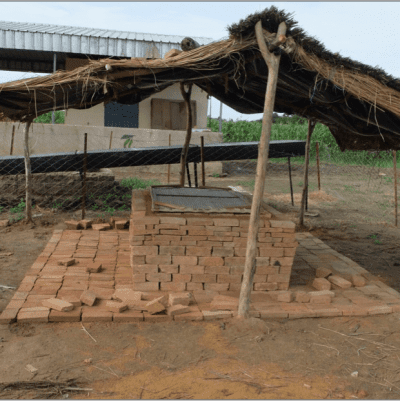
Photo: Energypedia / CC BY SA
Evaporative cooling chambers, or “zero-energy cool chambers,” are simple, affordable systems that keep produce fresh without using electricity. They can be made from locally available materials including bricks, sand, wood, dry grass, burlap sack, and twine. Learn more in E4C’s Solutions Library: Evaporative cooling chambers.
For more sustainability, get the water from a reclaimed water source like the Water Hub.
Zero-Emission Fridge for Rural Africa
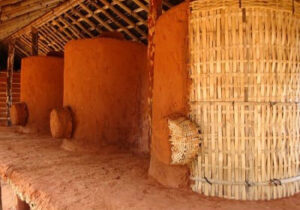
Photo: Technology Exchange Lab
The Zero Emission Fridge for Rural Africa is a cooling silo built from bamboo and clay. with a vermin control system for storing grains. Also called ‘Silo Tehetere,’ the silo stores seeds and grains and includes vermin control measures. The fridge is built with subsistence farmers in Mozambique in mind, designed to feed people and enhance food security by reducing post-harvest loss. It also helps communities adapt to climate change that is extending the ‘hunger period’ of yearly drought that lasts from October to January. Learn more about it in E4C’s Solutions Library: Zero-Emissions-Fridge for Rural Africa.
Fenik Yuma Electricity-Free Cooler
Fenik’s Yuma 60 liter cooler refrigerates perishable foods without the need for electricity Instead, the system uses patent-pending PhaseTek™ membrane technology to employ evaporative cooling. The internal storage space can be 10-15°C (20-30°F) cooler than ambient temperatures. Learn more in E4C’s Solutions Library: Fenik Yuma 60L.
Mobisol Solar Home System

A motorcyclist in Rwanda transports Mobisol’s solar power generating equipment. Photo courtesy of Mobisol
Powering air conditioners, fans and refrigerators with a renewable energy like solar can reduce the carbon footprint to keep cool more sustainably. The Mobisol Solar Home System is a large integrated energy system with a solar panel, battery, power electronics and appliances. Rather than charging a high up-front price, the system is pay-as-you-go. The systems are available in 40, 80, 100, 120 and 200 Watts and can support more demanding appliances such as refrigerators, televisions and de-huskers. Learn more about Mobisol systems in our Solutions Library: Mobisol Solar Home System.
Solar Communal Refrigeration
These solar refrigeration systems are built with a specific use in mind: post-harvest meat storage for pastoralists in Kenya. The system’s designers at Tree_Sea.mals have built low-fidelity prototypes, and plan to offer 6m 12m versions. The organization also plans to expand sales to Ethiopia, Rwanda, and Zimbabwe. Learn more in our Solutions Library: Solar Communal Refrigeration.
